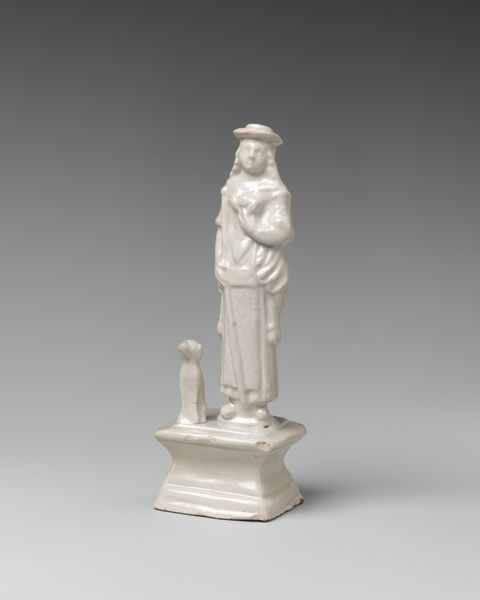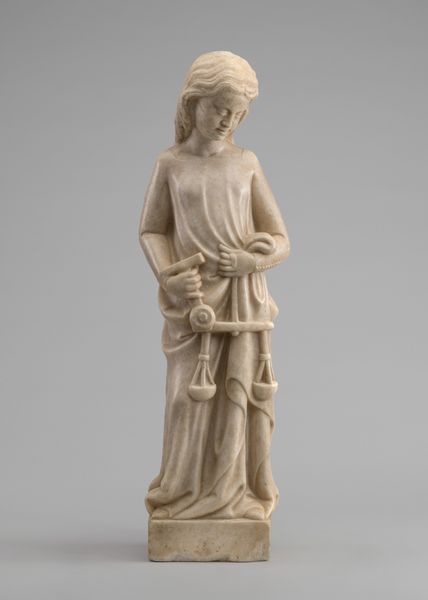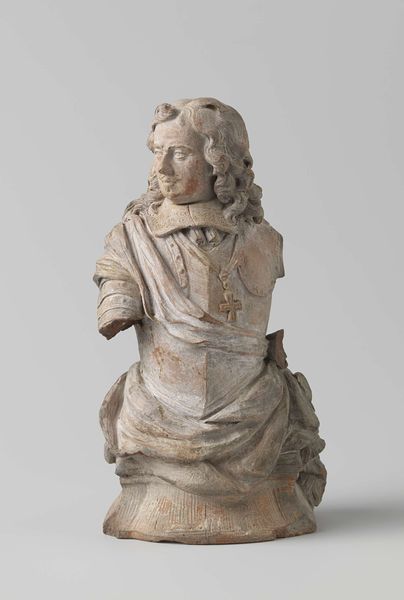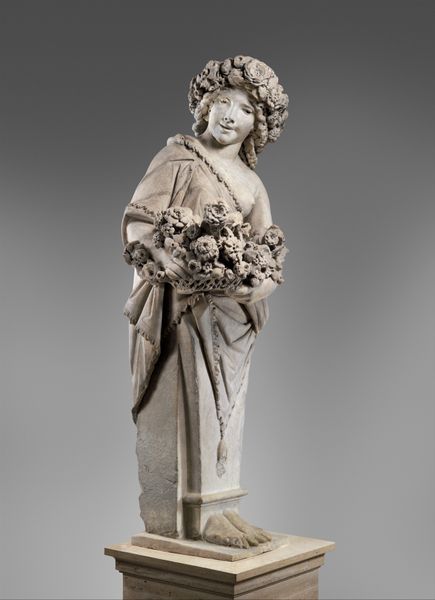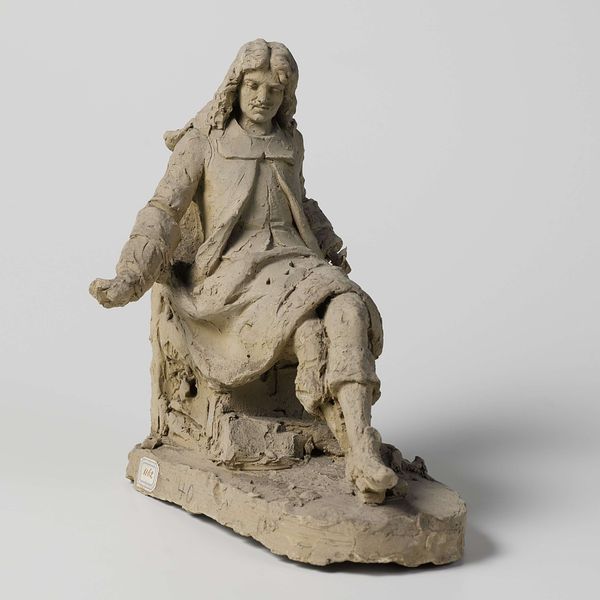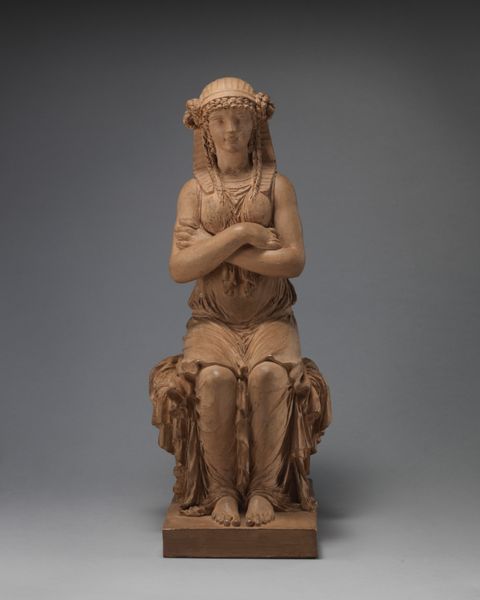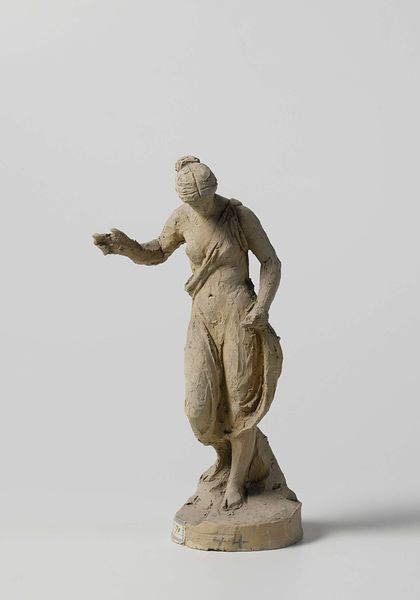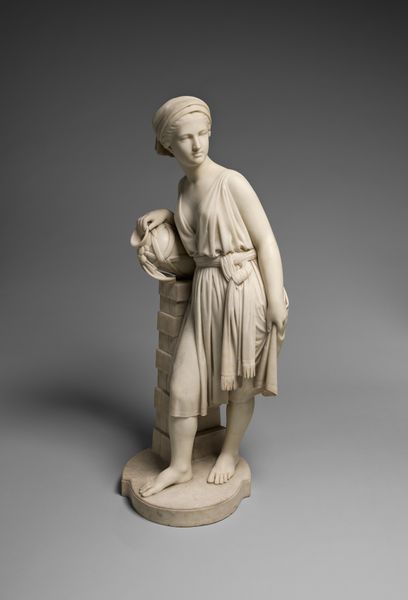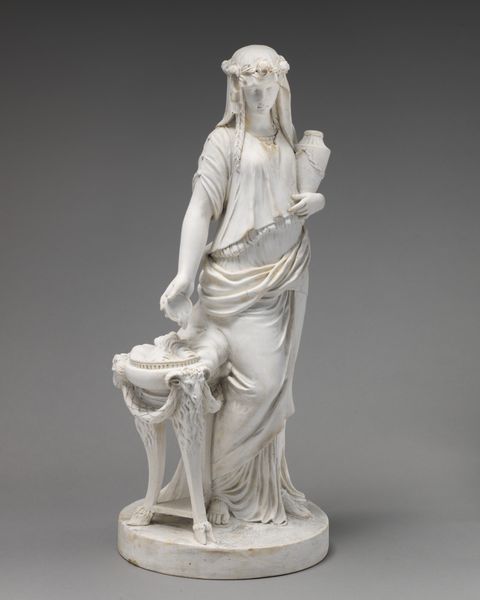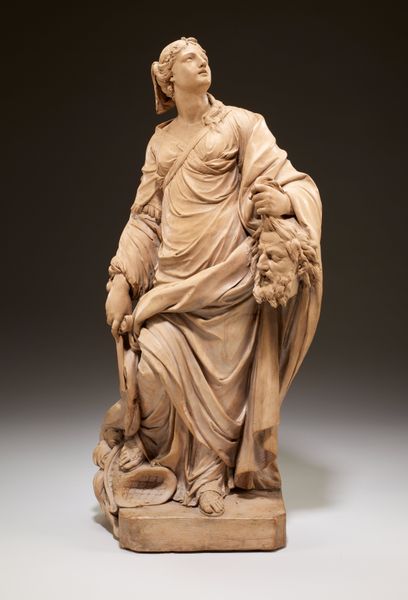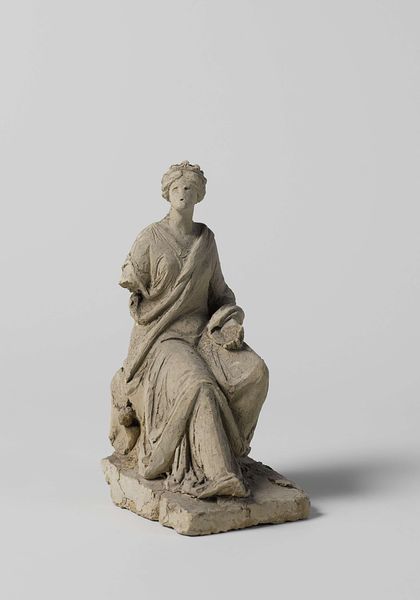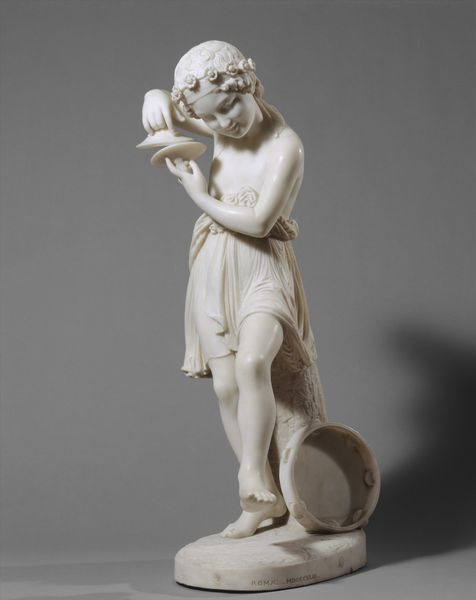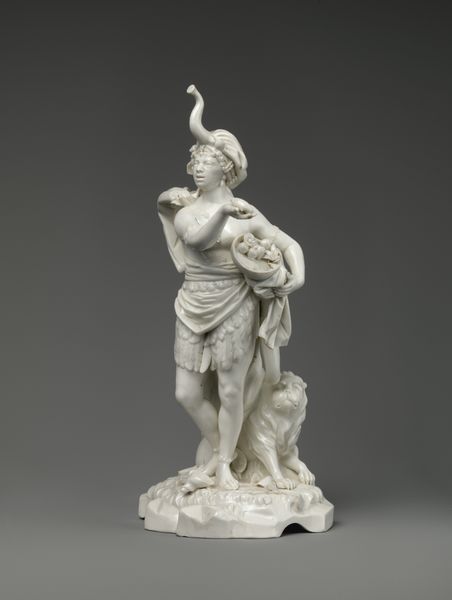
ceramic, sculpture
#
neoclacissism
#
dog
#
landscape
#
ceramic
#
figuration
#
form
#
sculpture
#
decorative-art
Dimensions: Height: 8 3/8 in. (21.3 cm)
Copyright: Public Domain
Curator: Let's consider this delicate piece, "Diana with Hound," attributed to Ralph Wood the Younger, created sometime between 1775 and 1795. It's a ceramic sculpture, residing here at the Metropolitan Museum of Art. Editor: It has such a stark presence, doesn’t it? The matte ceramic and restrained details give it a compelling simplicity, though the texture of that landscape base catches the eye, juxtaposed with Diana's smooth robe. I wonder how that material was prepared. Curator: That starkness serves a Neoclassical aesthetic, doesn’t it? Diana, the Roman goddess of the hunt, purity and the moon, is often shown with her hound, a symbol of fidelity and tracking. It echoes older mythologies. Editor: Definitely. It is interesting, though, thinking about the class implications of that time. Ceramic figures like these were fashionable objects. Were these figures readily available, or would there have been restricted production due to specialized resources? The whiteness also echoes marble, a clear aspirational link to high art of the time. Curator: Exactly! She’s almost archetypal: a powerful woman, but also a figure of serene beauty. Note how her gesture invites silence, commanding a composed, contemplative viewership. The decorative arts become coded for high society through visual cues. Editor: Yes, there's something about that very smooth, consistent material that conveys manufactured idealism, like those smooth, untouched Neoclassical marbles. And that ceramic material would be produced en masse. Where were these works actually consumed? Curator: The figures' visual and symbolic power also resonates with long-established understandings of femininity, authority, and what it means to be perceived as "cultured," a symbol that lasts throughout time. Editor: So, on one hand, the method of production speaks to the developing industry. On the other, there's a strong sense of deliberate aesthetic choices driving its enduring significance as a piece. Curator: Absolutely. Examining pieces like this helps unpack the layers of symbolism present and understand its long term impacts. Editor: Indeed, examining this gives more insight into industry as much as to artistry.
Comments
No comments
Be the first to comment and join the conversation on the ultimate creative platform.
